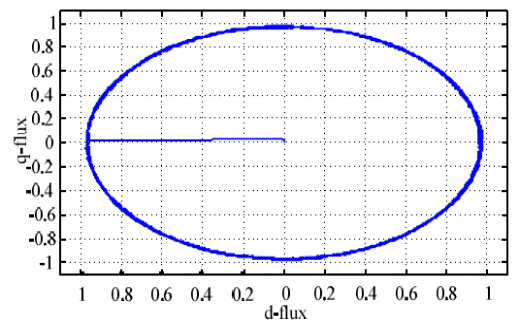ABSTRACT:
This paper presents a novel seven-level
inverter topology for medium-voltage high-power applications. It consists of
eight active switches and two inner flying-capacitor units forming a similar
structure as in a conventional Active Neutral Point Clamped (ANPC) inverter.
This unique arrangement reduces the number of active and passive components. A
simple modulation technique reduces cost and complexity in the control system
design without compromising reactive power capability. In addition, compared to
major conventional 7-level inverter topologies such as the Neutral Point
Clamped (NPC), Flying Capacitor (FC), Cascaded H-bridge (CHB) and Active NPC
(ANPC) topologies, the new topology reduces the dc-link voltage requirement by
50%. This recued dc-link voltage makes the new topology appealing for various
industrial applications. Experimental results from a 2.2 kVA prototype are
presented to support the theoretical analysis presented in this paper. The
prototype demonstrates a conversion efficiency of around 97.2% ± 1% for a wide
load range.
KEYWORDS:
1. Multilevel
Inverter
2. 7-level
inverter
3. Active
Neutral Point Clamped (ANPC) inverter
4. Flying
Capacitor
5. Voltage
Source Converter
SOFTWARE: MATLAB/SIMULINK
CIRCUIT DIAGRAM:
Fig.
1. Proposed seven-level three-phase inverter circuit
Fig.
2. Some key simulated waveforms of the proposed seven-level inverter: (a) input
voltage, flying capacitors voltages, phase voltage (with and without filter),
and (b) voltage stress on switches, (c) current stress on switches, and (d)
harmonic spectrum of the output voltage.
Fig.
3. Operation of the inverter during: (a) lagging power factor of φ𝑝𝑓 = −450 (RL load of 60 Ω + 200 mH), and
(b) leading power factor of φ𝑝𝑓 = +450 (RC load
of 60 Ω + 50 μF).
Fig.
4. Dynamic performance of the converter under several changes in the active
power (a step change in load from no load to full load (30 Ω ), b step change
in load from full load (30 Ω) to half load (60 Ω), and c step change in load
from half load (60 Ω) to full load (30 Ω)).
CONCLUSION:
In this paper, a novel
eight-switch seven-level Active Neutral Point Clamped inverter is proposed.
Modulation techniques are explored and operation under both active and reactive
power factor conditions are systematically analyzed. A comparative analysis and
a set of design guidelines are presented and followed by simulation and
experimental verification. Compared to conventional seven-level inverter
topologies, the ANPC inverter topology requires only eight power devices for a
single-phase design and halves the dc-link voltage required to produce a given
ac voltage output magnitude when compared to similar circuits. For applications
such as for a grid-connected PV system, this may help eliminate additional
power conversion stages (boost converters) and therefore increase the
efficiency and reliability of the system. Further, this reduces the voltage
stress on the dc-link capacitor, which reduces the cost and size of the system
design. The inverter can operate at any power factor (leading or lagging)
without requiring any changes to the modulation scheme. Compared with other
seven-level configurations, the performance demonstrated by the new inverter is
highly competitive, potentially making it an appropriate topology choice for a
wide-range of power conversion applications, e.g. variable-speed drives,
electric vehicles (V2G/G2V technologies), grid-connected renewable energy
systems.
REFERENCES:
[1] M. Schweizer, T. Friedli, and J. W. Kolar, “Comparative
Evaluation of Advanced Three-Phase Three-Level Inverter/Converter Topologies
Against Two-Level Systems,” IEEE Trans. Ind. Electron., vol. 60, no. 12,
pp. 5515-5527, Dec. 2012.
[2] H. Tian, Y. Li, Y. W. Li, “A Novel Seven-Level Hybrid-Clamped
(HC) Topology for Medium Voltage Motor Drives,” IEEE Trans. Power Electron.,
vol. 33, no. 7, pp. 5543-5547, Jul. 2018.
[3] S. Kouro, M. Malinowski, K. Gopakumar, J. Pou, L. G.
Franquelo, B. Wu, J. Rodriguez, M. A. Perez, and J. I. Leon, “Recent Advances
and Industrial Applications of Multilevel Converters,” IEEE Trans. Ind.
Electron., vol. 57, no. 8, pp. 2553-2580, Aug. 2010.
[4] J. Rodríguez, J. S. Lai, and F. Z. Peng, “Multilevel
Inverters: A Survey of Topologies, Controls, and Applications,” IEEE Trans.
Ind. Electron., vol. 49, no. 4, pp. 724-738, Aug. 2002.
[5] J. I. Leon, S. Vazquez,
and L. G. Franquelo, “Multilevel Converters: Control and Modulation Techniques
for their Operation and Industrial Applications,” Proc. of the IEEE,
vol. 105, no. 11, pp. 2066-2081, Nov. 2017.



































